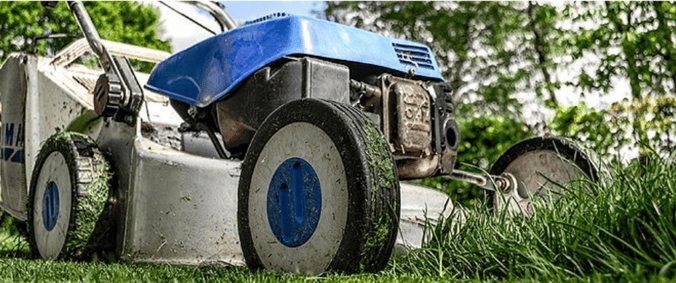
With an Organic Lawn Care program, what happens in between our visits is just as important as the services we are providing. Below are some guidelines for watering and mowing that will support our efforts. Every property has different variables when it comes to watering, such as soil conditions, water pressure, sun exposure, so there is no exact science behind a watering schedule. However, these principals will help determine the best schedule for your lawn.
Irrigation for Established Lawns
- Deeper and less frequent watering: Shallow frequent watering encourages thatch and weeds. The object is to get the grass roots to grow deep. Roots will grow deep only if water is available deep in the soil. This is why less frequent, but deep watering is better. The surface soil dries out but the deep soil remains moist, encouraging the roots to grow deeper. Water will penetrate deeper if you water about ½ inch, wait two or three hours, and then water one inch.
- Water early morning: The best time to water is early morning. This allows the grass and soil surface to dry off throughout the day. Watering in the evening may promote fungal diseases, which are often related to excess moisture.
- Avoid over watering: The amount of water your lawn needs depends on the type of grass/soil, sun exposure, and rainfall amount. A simple way to determine how much water the lawn is getting is to place a few empty tuna cans on the lawn during a watering and monitor them as you water. Adding organic matter to the soil, compost top dress, will increase the soils ability to hold water, requiring less irrigation over time. Check for puddles on the grass surface or excessive runoff on driveways or walkways. Timers can be helpful and are found at most home centers.
Irrigation for New Lawns
- Keep moist with frequent short watering: The goal for seed germination is to keep the soil moist. If puddles occur on the soil surface, it will move the seed around or cause it runoff. It is best to water a newly seeded lawn by hand until the seed has germinated and has established a root system.
Mowing
- Sharp blades: It is important to take mowing seriously if we want to keep our organic lawns healthy. Mowing is a stress producing process for the lawn, but we can minimize that stress with a few simple techniques. Start with a sharp mower blade, as a dull blade will rip the grass leaving it wounded and open to disease. Avoid removing more than one third of the leaf at each cutting. A more severe cut will produce additional stress from which the plant must recover.
- Raise height of cut: In order to produce thick, dense grass and get a deep root system, raise the height of cut to 3 to 3-1/2 inches. There are four direct benefits that we get from longer height of cut.
- The taller leaf shades the soil surface and keeps weed seeds from germinating.
- Taller grass cools the soil surface during summer stress periods and is effective at out competing weeds.
- Taller grass requires less watering. Because of the deeper roots the grass can access deeper moist soil. The leaf shade also decreases water evaporation from your natural lawn.
- Most importantly the longer leaf length aids photosynthesis (more blade surface exposed to the sun).
- If your natural lawn will be used for entertaining or if there is a big weekend of sports planned for the lawn, then of course mowing the lawn shorter would be appropriate. If you are mowing the lawn down more than a few inches, try and do it in increments. For example: mow once, then lower the mowing height and mow again in a different direction. Always try to alternate mowing patterns.
- Mulch cut (recycle clippings): Always try and leave grass clippings on your organic lawn, as they will breakdown and provide a good source of nitrogen for the soil. There are a few exceptions when it may be necessary to bag the clippings: the first mow of the year, to remove winter debris, or when the lawn is overgrown and the clippings could smother the lawn.
As always, feel free to contact us for assistance.


